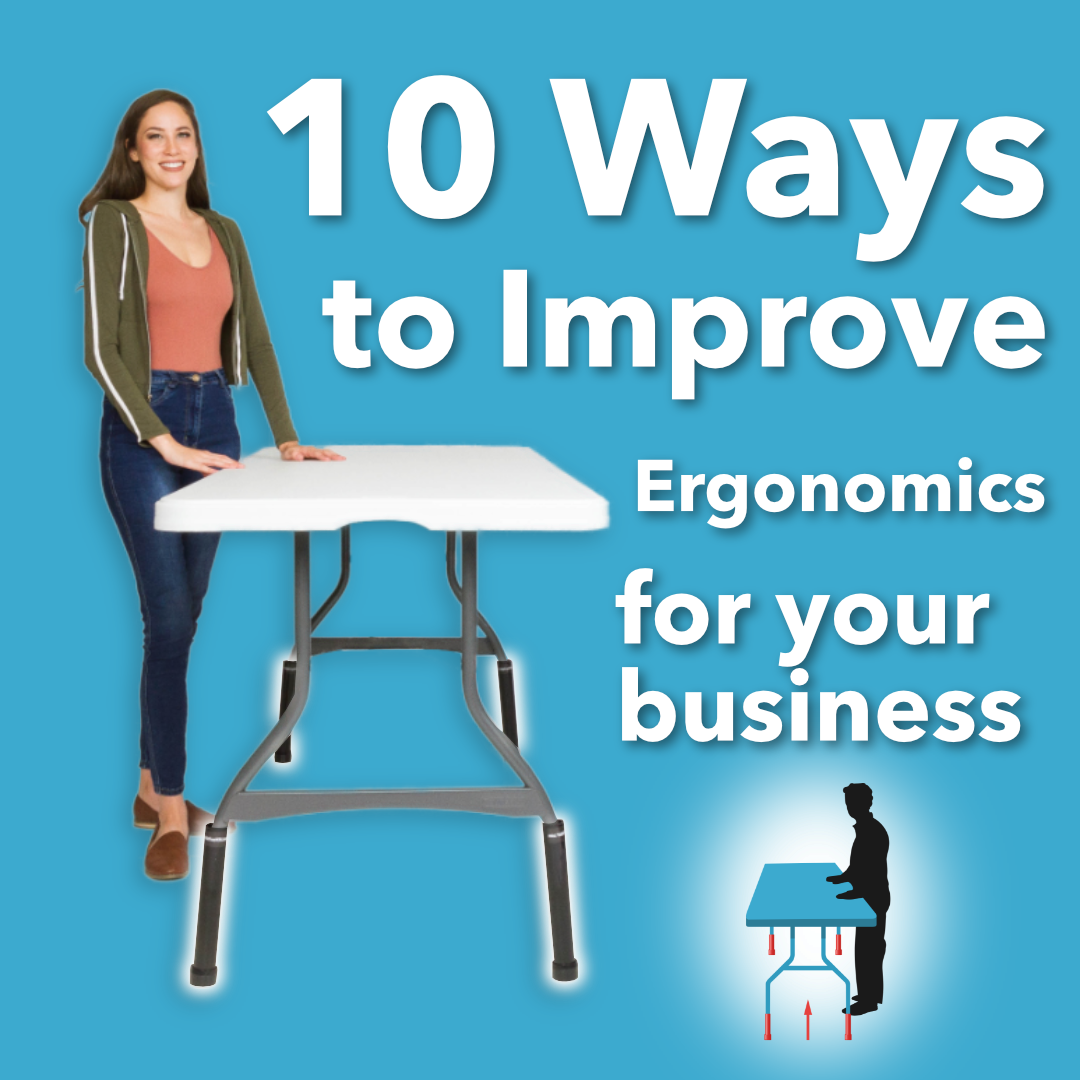Retail safety operations often focus on front of house operations, to keep both workers and customers safe.
But what about the back of the house?
Injuries in the retail space
In 2016, the Bureau of Labor found the most reported injury was overexertion, followed by contact with objects and/or people. Slips, trips and falls are the third most common cause of harm.
Many of these can be prevented by simply engineering the workspace to account for ergonomics. For example, Walmart redesigned their checkout carousels to avoid putting their cashiers at risk from thousands of repetitive motions each day.
Luckily, you don’t always have to purchase new equipment to help keep your workers safe!
Take folding tables, which many retailers use in their receiving process. They’re normally too low for workers to stand at comfortably, with their spines in the correct posture. Working hunched over is bad for the back, as you can imagine.
Slide on a pair of folding table risers to lift the work surface to kitchen counter height. Employees can now stand straight to do the work, plus you don’t have to buy any new tables or equipment.
Introducing a culture of safety will help workers think about proper techniques and avoid getting hurt.
Culture of safety
This process does take a bit of time to develop. The goal is zero safety incidents in the workplace.
If your top management has not been involved in safety culture before, you’ll need to make the case to them. We’ll have more details next week (stay tuned!), but briefly, the cost to implement will normally recoup itself in reduced worker’s comp outlays.
Don’t think you need to focus on safety? The BOL report mentioned above also found that retail workers have a higher incidence of injury and illness than construction workers do! The more incidents you have, the higher your worker’s comp costs will be. Not to mention the cost of hiring replacement workers.
Retail workers need to be trained on safety just as construction workers are. Don’t forget to include training for part-time workers and seasonal hires.
Summary
All workers – front of house and back – need to be trained on, and work in, a culture of safety. Reducing worker’s compensation costs often pays for the cost of implementing the necessary processes.
Some of your ergonomics problems have inexpensive solutions. Repurpose what you’ve got to save money and your workers’ backs!
Are you a retailer with safety culture? Let us know in the comment section below what you do to keep your workers safe in the comments.



